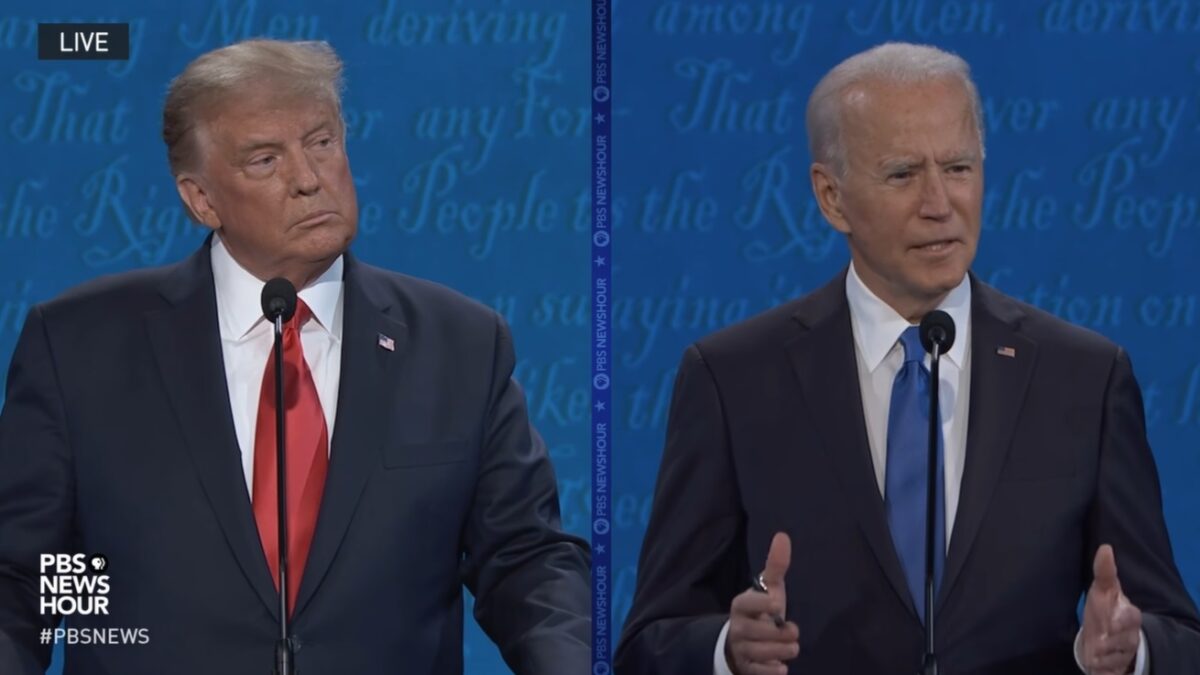
This year’s dispiriting presidential race increasingly resembles 1976’s. Both elections featured two weak candidates, an “insider” and an “outsider,” and a defining event one candidate could not overcome. The real possibility also exists that, just as in 1976, this year’s winner will immediately look very weak in office.
Forty years ago, the two candidates had taken circuitous routes to their nominations. Republican Gerald Ford had gone from House minority leader to vice president (December 1973) and quickly to president (August 1974). The only unelected vice president or president, Ford was the consummate Washington insider. Democrat Jimmy Carter had been a one-term Georgia governor, but lacked Washington experience. Carter accentuated his outsider status, casting himself as a peanut farmer from the small town of Plains.
The two candidates’ contrast was accentuated by the race’s defining element: Richard Nixon and Watergate. This also produced the race’s pivotal point: Ford’s full and unconditional pardon for Nixon just one month after taking office. Ford’s action ended Watergate for America, but not for him. Ultimately, it loomed large in his narrow defeat: 48 percent to 50.1 percent in the popular vote and 240 to 297 in electoral votes.
It’s 1976 All Over Again
Although today’s campaign narrative is reversed, its elements are the same. This time Donald Trump the Republican is the outsider and Hillary Clinton the Democrat is the insider. Both took circuitous routes to their nominations. Clinton is the first woman nominee and the first former first lady to run. Trump is the first person since Eisenhower to have no previous government experience.
This election too may have recently had its watershed event: The revelation of Trump’s offensive 2005 interview and subsequent sexual allegations against him. While the 1976 and 2016 events’ impact came at different times—1976’s prior to the race, 2016’s just a month before voting—their pivotal quality in a tight race may be similar.
Up until Trump’s interview revelation, the race had been close. According to Rasmussen polling (1,500 Likely Voters, MOE +/-2.5 percent), Trump led 43 percent to 41 percent just before the interview’s release. The following Monday, October 10, he trailed Clinton 45 percent to 38 percent. By October 19, however, Trump and Clinton were tied at 42 percent.
That Trump’s interview and its aftermath of allegations may prove to be Ford’s pardon, and a close race’s deciding factor, reveals another potential 1976 similarity: The candidates’ weakness and what happens when the winner no longer benefits by comparison. In both races, the field’s weakness is glaring. Despite Ford’s pardoning of America’s most disgraced politician, the result was extremely close. Even Ford’s poor debate performance—stating the USSR did not dominate Eastern Europe—did not propel a logically expected landslide.
Both Candidates Are Weak, Yet Clinton Is Weaker
In 1976, Ford weakened himself by his actions. Yet Carter proved only marginally less weak, failing to put away the politically handicapped Ford. In 2016, Trump too has repeatedly weakened himself, undermining a powerful populist opportunity with impolitic missteps. The 2005 interview and subsequent allegations may be “the straw that broke the camel’s back,” but this camel has repeatedly regained its feet under self-imposed burdens. Yet like 40 years ago, Clinton’s inability to dispatch Trump has proved she is only slightly less weak.
The 1976 election’s aftermath demonstrates the potential problem 2016’s election could share. Once Carter won, his comparison with Ford ended. Carter’s marginally smaller weaknesses quickly appeared as they were: Weaknesses. Carter’s single term unraveled quickly, becoming the modern benchmark for poor presidencies. It did despite enormous advantages. America was ready to move ahead following the Vietnam War and Watergate.
Congress held enormous opportunity, too. In Carter’s first two years, Democrats held 292 House and 61 Senate seats. In Carter’s last two years in office, they retained 279 House and 61 Senate seats. By comparison, Republicans currently hold 246 House and 54 Senate seats).
Should Clinton win, she will not approach Carter’s advantages. Although America longs to turn its economic corner, there is no clear indication it will, or that it can easily address major issues like foreign terrorism, domestic security, and immigration. Clinton will not have Carter’s overwhelming congressional majorities to address these issues, either.
The 1976 presidential election provides a sobering warning 40 years later. A dispirited electorate is a volatile one. Voters’ retreat from one candidate does not mean they are running toward the other, or will stay with that candidate as president.
Carter won narrowly only because of his juxtaposition to Ford explicitly, and Nixon implicitly. When that comparison vanished, he failed spectacularly in office, despite huge opportunities for success. Clinton could easily find herself in Carter’s unenviable shoes now, but with fewer of his advantages later.









